
Overview
The glass manufacturing industry plays a crucial role in producing a vast array of glass products used in everyday life and industrial applications. This sector includes the creation of items such as windows, bottles, tableware, and specialty glass for automotive and electronics applications. Key processes in glass manufacturing involve melting raw materials, forming the molten glass into desired shapes through techniques like blowing, pressing, and drawing, and annealing to relieve internal stresses. Innovation in this industry focuses on enhancing the durability, clarity, and functionality of glass products, with significant efforts directed toward improving energy efficiency in production, increasing the use of recycled materials, and adopting smart manufacturing technologies to optimize processes and ensure high product quality.
Depending on specific features and functions, GAO Tek’s oxygen gas detectors are sometimes referred to as O2 gas detectors, oxygen monitors, oxygen sensors, O2 analyzers, oxygen detection devices, O2 meters, oxygen concentration meters, oxygen level detectors, O2 monitors, and oxygen gas analyzers.
Furthermore, GAO Tek’s Oxygen Gas Detectors are further grouped into: handheld, high precision , outdoor , alert system, data logging, and rugged.
GAO Tek’s oxygen gas detectors have the following applications in glass manufacturing industry
- Furnace Atmosphere Control: GAO Tek’s detectors monitor and adjust oxygen levels within glass furnaces to ensure optimal melting temperatures, preventing overheating or underheating of the glass batch.
- Combustion Optimization: GAO Tek’s oxygen detectors ensure proper oxygen levels in combustion systems, optimizing fuel usage, improving energy efficiency, and reducing harmful emissions.
- Safety Monitoring: GAO Tek’s continuous oxygen detection helps identify potential fire and explosion hazards, maintaining a safe working environment for employees.
- Annealing Process Management: GAO Tek’s detectors control oxygen levels during the annealing process to prevent glass stress and breakage, ensuring high-quality glass products.
- Leak Detection: GAO Tek’s oxygen detectors identify leaks in gas supply lines and furnaces, preventing contamination and ensuring process integrity.
- Quality Control: GAO Tek’s oxygen monitoring ensures consistent quality by detecting oxygen levels at various production stages, minimizing defects in the final glass products.
- Inert Atmosphere Maintenance: GAO Tek’s detectors control oxygen levels in processes requiring an inert atmosphere, such as specialty glass production, preventing oxidation and other undesirable reactions.
- Energy Efficiency: GAO Tek’s oxygen detectors optimize oxygen levels in the glass melting process, reducing energy consumption, leading to cost savings, and minimizing environmental impact.
More information on oxygen gas detectors and their applications in other industries can be found on this page oxygen gas detectors. This category page lists related products environmental.
Systems in Glass Manufacturing Industry utilizing Oxygen Gas Detectors
Here are some popular systems in glass manufacturing industry using oxygen gas detectors:
Furnace Atmosphere Control Systems: Furnace atmosphere control systems regulate the composition of gases within glass melting furnaces to ensure optimal conditions for the production of high-quality glass products.
- Temperature Regulation: Oxygen gas detectors monitor and adjust oxygen levels to maintain precise melting temperatures crucial for glass production.
- Batch Homogeneity: Ensures consistent composition and quality of molten glass by controlling the atmosphere’s oxygen content.
- Energy Efficiency: Optimizes fuel usage by maintaining the ideal oxygen-to-fuel ratio, reducing energy consumption in the melting process.
Combustion Systems: Combustion systems in the glass manufacturing industry manage the burning of fuels to generate heat required for melting raw materials and maintaining furnace temperatures.
- Fuel Optimization: Oxygen gas detectors adjust oxygen levels in combustion systems to achieve efficient fuel combustion, maximizing energy output per unit of fuel.
- Emission Reduction: Monitors oxygen levels to ensure complete combustion, minimizing emissions of pollutants such as carbon monoxide and particulate matter.
- Cost Savings: By optimizing combustion efficiency, these detectors help reduce operational costs associated with fuel consumption and maintenance.
Safety Systems:
- Hazard Detection: Continuously monitors oxygen levels to detect potential fire or explosion risks in areas where combustible gases or materials are present.
- Emergency Response: Activates alarms or safety protocols when oxygen levels deviate from safe limits, ensuring rapid response to mitigate risks.
- Compliance: Helps glass manufacturers adhere to safety regulations and standards by maintaining safe oxygen levels throughout production processes.
Quality Control Systems: Safety systems in glass manufacturing ensure compliance with industry regulations and protect personnel and equipment from hazards such as high temperatures and chemical exposure.
- Product Consistency: Monitors oxygen levels at critical production stages to ensure uniformity and consistency in glass quality and performance characteristics.
- Defect Minimization: Identifies deviations in oxygen levels that may contribute to defects such as bubbles or impurities in glass products, enabling corrective actions.
- Process Verification: Validates adherence to quality standards by monitoring and recording oxygen levels as part of quality assurance protocols.
Energy Management Systems: Energy management systems optimize energy usage across glass manufacturing facilities, reducing costs and environmental impact while maintaining production efficiency.
- Consumption Monitoring: Tracks oxygen usage and energy consumption patterns to identify opportunities for optimizing furnace operation and reducing energy costs.
- Process Optimization: Adjusts oxygen levels based on real-time data to maximize energy efficiency without compromising glass quality or production throughput.
- Cost Reduction: Achieves cost savings by optimizing oxygen utilization, reducing fuel consumption, and lowering overall operational expenses related to energy use.
GAO Tek’s targeted markets are North America, particularly the U.S., Canada.
Complying with Government Regulations
GAO Tek’s oxygen gas detectors comply or help our customers comply with the U.S. government regulations such as:
- Standard for Ovens and Furnaces(NFPA)
- Flammable Liquids (OSHA)
- Performance Requirements for Combustible Gas Detectors (ANSI/ISA)
- Environmental Protection Agency Standards (EPA)
- National Institute for Occupational Safety and Health Guidelines (NIOSH)
- Department of Transportation Regulations (DOT)
GAO Tek’s oxygen gas detectors comply or help our clients comply with the Canadian regulations such as:
- Natural Gas and Propane Installation Code by CSA
- Compressed Breathing Air and Systems by CSA
- Selection, Use, and Care of Respirators by CSA
- Technical Standards and Safety Authority Regulations (TSSA)
- Hazardous Products Act (HPA)
- Canada Labour Code, Part II (Occupational Health and Safety)
- Health Canada Cosmetics Regulations
- Workplace Hazardous Materials Information System (WHMIS) by Health Canada
- Environmental Regulations by Environment Canada
Case Studies of Oxygen Gas Detectors in Glass Manufacturing Industry
Oxygen gas detectors are sometimes called O2 gas detectors, oxygen monitors, oxygen sensors, O2 analyzers, oxygen detection devices, O2 meters, oxygen concentration meters, oxygen level detectors, O2 monitors, and oxygen gas analyzers.
Here are some practical examples of using oxygen gas detectors in the glass manufacturing industry:
In a large-scale glass manufacturing plant in Ohio, oxygen gas detectors were integrated into the furnace operations to monitor oxygen levels during the glass melting process. Compliant with NFPA standards, these detectors ensured precise control over the furnace atmosphere, optimizing temperatures for consistent glass quality. Real-time data from the detectors was integrated with the plant’s SCADA system, enabling operators to adjust combustion parameters promptly. This proactive approach not only enhanced production efficiency but also minimized energy consumption by 12%, contributing to operational cost savings.
A specialty glass manufacturer in California implemented oxygen gas detectors across their annealing ovens to maintain controlled atmospheres during the glass cooling process. These detectors, meeting ANSI/ISA standards, monitored oxygen levels to prevent oxidation and ensure uniform annealing of glass products. Integrated with advanced process control software, the detectors allowed for real-time adjustments in annealing parameters, reducing product defects and enhancing yield rates. This integration significantly improved product consistency and customer satisfaction.
In New York, a glass fabrication facility utilized oxygen gas detectors in their quality control processes to monitor oxygen levels in finished glass products. Compliant with EPA standards, these detectors helped ensure that glass products met stringent environmental and safety specifications. By detecting deviations in oxygen levels that could affect product quality, the facility maintained high standards of product integrity and regulatory compliance. This approach also supported their sustainability goals by minimizing waste and optimizing material usage.
A glass bottle manufacturing plant in Texas integrated oxygen gas detectors into their bottle-forming processes, including the heating and blowing phases. Aligned with DOT regulations, these detectors monitored oxygen levels to prevent combustion risks during high-temperature operations. Integrated with the plant’s safety management systems, the detectors enabled rapid response to potential hazards, ensuring uninterrupted production and maintaining a safe working environment. This implementation underscored the critical role of oxygen gas detectors in ensuring both operational safety and regulatory compliance.
A glass recycling facility in Illinois adopted oxygen gas detectors to monitor oxygen levels in their glass melting furnaces. These detectors, compliant with NFPA and OSHA standards, played a vital role in controlling furnace atmospheres to optimize glass melting efficiency. By continuously monitoring oxygen levels and integrating data with their energy management systems, the facility achieved a 15% reduction in energy consumption per ton of recycled glass processed. This initiative not only enhanced operational efficiency but also supported sustainable practices in glass recycling.
In Pennsylvania, a glassware manufacturing plant utilized oxygen gas detectors in their batch mixing and melting processes. These detectors, meeting ANSI/ISA standards, monitored oxygen levels to ensure precise control over glass composition and quality. Integrated with automated batch control systems, the detectors facilitated real-time adjustments in raw material inputs based on oxygen readings, improving batch consistency and reducing material waste. This implementation exemplified the integration of advanced monitoring technologies to achieve superior product quality and production efficiency.
A glass fiber production facility in Michigan integrated oxygen gas detectors into their fiber drawing processes. Compliant with industry-specific standards, these detectors monitored oxygen levels to prevent overheating and ensure consistent fiber quality. Integrated with process automation systems, the detectors enabled real-time adjustments in furnace conditions, optimizing fiber drawing parameters and reducing downtime. This implementation enhanced production throughput and reliability, meeting the stringent demands of the fiber optics market.
In Ontario, a large-scale glass packaging manufacturer implemented oxygen gas detectors in their molding operations. These detectors, meeting CSA standards, monitored oxygen levels within heated molds to prevent combustion risks and ensure worker safety. Integrated with moldflow analysis software, the detectors optimized molding cycle times and material usage, achieving significant cost savings while improving production efficiency. This integration highlighted the importance of precise oxygen monitoring in optimizing manufacturing processes and enhancing overall operational performance.
A glass coating facility in Florida adopted oxygen gas detectors to monitor oxygen levels during the coating application process. These detectors, compliant with NIOSH guidelines, ensured safe operating conditions by controlling oxygen levels in enclosed coating chambers. Integrated with remote monitoring systems, the detectors provided real-time data on oxygen concentrations, allowing operators to adjust coating parameters promptly. This implementation improved coating consistency and minimized environmental impact, supporting the facility’s commitment to sustainable manufacturing practices.
In British Columbia, a glass insulator manufacturing plant integrated oxygen gas detectors into their annealing processes. These detectors, compliant with local safety regulations, monitored oxygen levels to maintain precise annealing atmospheres critical for insulator performance. Integrated with quality assurance systems, the detectors facilitated continuous monitoring of product quality attributes related to annealing conditions. This implementation enhanced product reliability and durability, meeting stringent industry standards and customer expectations.
GAO RFID Inc. RFID HARDWARE, a sister company of GAO Tek Inc., is ranked as a top 10 RFID suppliers in the world. Its RFID, BLE, and IoT products have also been widely used in the glass manufacturing industry.
Electrical Equipment Manufacturing Industry
Use of Oxygen Gas Detectors with Leading Software and Cloud Services in Glass Manufacturing Industry
GAO Tek has used or has facilitated its customers to use GAO’s oxygen gas detectors with some of the leading software and cloud services in their applications. Examples of such leading software and cloud services include:
- Ceramics Lab Moisture Analysis
- Moisture Tracker
- Ceramic Pro Analyzer
- Glass Master Software
- Kiln Mate
- Glass Inspector Cloud
- Glass Works Cloud
- Moisture Data Cloud
- Ceram Cloud
- Ceramic Lab Cloud
- Glass Craft Cloud
- Kiln Monitor Cloud
- Ceram Sense Cloud
GAO Tek’s oxygen gas detectors and their applications in other industries are listed on this page oxygen gas detectors. Other related products can be found at this category page environmental.
Meeting Customers’ Demands
Large Choice of Products
In order to satisfy the diversified needs of their corporate customers, GAO Tek Inc. and its sister company GAO RFID Inc. together offer a wide choice of testing and measurement devices, network products, RFID, BLE, IoT, and drones.
Fast Delivery
To shorten the delivery to our customers, GAO has maintained a large stock of its products and is able to ship overnight within the continental U.S. and Canada from the nearest warehouse.
Local to Our Customers
We are located in both the U.S. and Canada. We travel to customers’ premises if necessary. Hence, we provide a very strong local support to our customers in North America, particularly the U.S., Canada . Furthermore, we have built partnerships with some integrators, consulting firms and other service providers in different cities to further strengthen our services. Here are some of the service providers in glass manufacturing industry we have worked with to serve our joint customers:
- Siemens
- Honeywell
- Rockwell Automation
- Emerson
- Hitachi Consulting
- Booz Allen Hamilton
- Slalom
- McKinsey & Company
- Sierra Systems
- Intra LAN Corporation
- Pivot Technology Solutions
- Graycon Group
- Alestra
- Axede
- Grupo CVA
- Logicalis México
- Devo team (France)
- SCC (UK)
- Tieto EVRY (Nordic countries)
- Sogeti (Multiple European offices)
GAO has Many Customers in Glass Manufacturing Industry
The products from both GAO Tek Inc. and GAO RFID Inc. have been widely used in glass manufacturing industry by many customers, including some leading companies. Here is more information on applications of GAO RFID Inc.’s products in glass manufacturing industry.
Electrical Equipment Manufacturing Industry
Here are some of GAO’s customers in glass manufacturing industry:
- Corning Incorporated
- Owens-Illinois, Inc.
- Guardian Industries
- PPG Industries
- Saint-Gobain
- Vitro S.A.B. de C.V. (Vitro America)
- Libbey Inc.
- Cardinal Glass Industries
- Pittsburgh Glass Works (PGW)
- Gerresheimer AG
- Milgard Windows & Doors
- Owens Corning
- AGC Inc. (formerly Asahi Glass Co.)
- S. Silica Holdings
- AGNORA (Architectural Glass North America)
- Vitrum Industries
- Walker Glass
- Tecnoglass Inc.
- Grupo Pavisa
- Crisa (part of Libbey Inc.)
- Pilkington (United Kingdom)
- Schott AG (Germany)
- Ardagh Group (Ireland)
- YKK AP America Inc
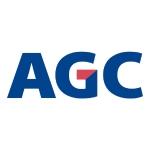










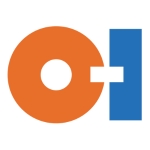

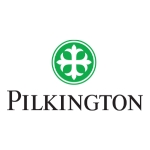


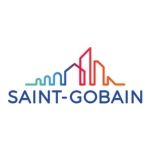
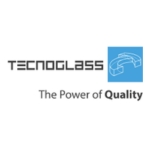



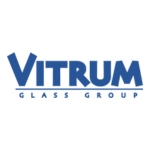
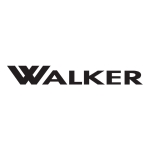

This resource page is for oxygen gas detectors.
To facilitate our customers to select our products, we have further classified oxygen gas detectors by their features handheld, high precision , outdoor , alert system, data logging, and rugged .
Below are other resource containing useful information on oxygen gas detectors:
FAQs on oxygen gas detectors on GAOTek.com
How to Choose oxygen gas detectors
Components of oxygen gas detectors
Operation, Maintenance & Calibration of oxygen gas detectors
Customers in the U.S. and Canada of other gas detectors
Contact Us
We ship overnight to anywhere on continental U.S. and Canada from one of our local warehouses.
If you have any questions about our products or want to place an order, our technical experts can help you. Please fill out this form or email us.
